by Alessandra Ressa

Have you ever wondered what lies beyond the many gated and often walled, arched entrance ways which suddenly appear here and there all around Trieste? They are just about everywhere, usually nestled along blank, featureless, high walls, and have been there for so long that even the locals hardly notice their existence anymore. If you approach one of these entrances closely, you can feel a cool breeze coming out, and with it, a distinctive smell of mold, permanent darkness, and memories of things past.

They are Trieste’s World War II air-raid shelters, a massive maze of underground tunnels running for over 10 kilometers under the city and its suburbs. There were approximately 23 shelters of various sizes and lengths. They were built during the German occupation of the city, between 1943 and 1945, to shelter troops, but mostly civilians, during the frequent bombings that Trieste suffered, which cost the lives of thousands of people. It is estimated that these tunnels, some equipped with toilets, electricity, and water tanks, could hold over 170,000 people.
After the war, these shelters were considered a burden and a gloomy reminder of the hard times past. Some were used for storage, others as unauthorized dumps, and others are currently parking lots. Most of them, however, have been abandoned and permanently locked or walled. Today, only two shelters, now museums, are regularly open for visits. The Kleine Berlin in via Fabio Severo, managed by Club Alpinistico Triestino (CAT), and Speleovivarium in via Guido Reni, managed by Società Adriatica di Speleologia (SAS). Others are occasionally opened by CAT (check their website and Facebook page for upcoming events) for visits and conferences. We asked CAT for permission to visit one of them in via Pendice Scoglietto, off via Cologna, just a few blocks away from central via Giulia.
This shelter is surprisingly clean, apart from years of trash blown in by the Bora, piled up at its entrance. With its 327 meters, the tunnel runs under the hill and the many apartment buildings above, and still preserves all of its original features. In the darkness, the echo of our steps promises adventure. We pass the first blast-proof wall and begin our exploration. On the sides, we find two rooms with uninviting squat toilets, one for males, one for females, a big water tank, air vents, little hollows on the sides where coal stoves for heating may have been placed. There is also a room with what looks like a little altar, maybe used for prayer, covered in graffiti representing Nazi and Fascist symbols of the era.

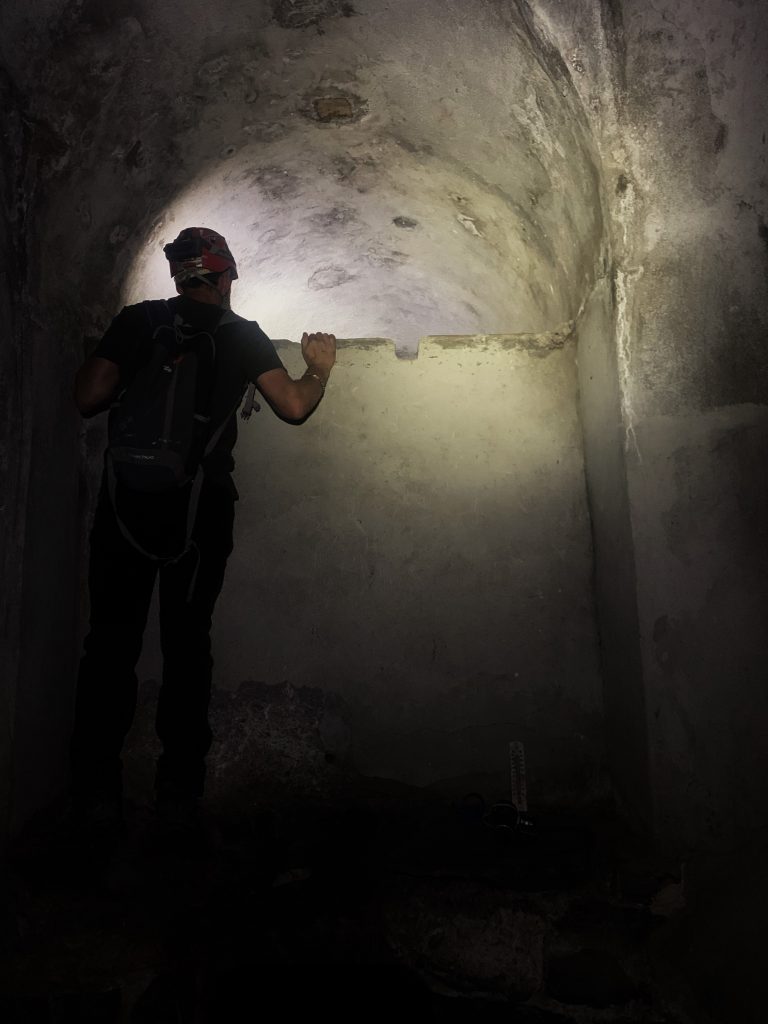
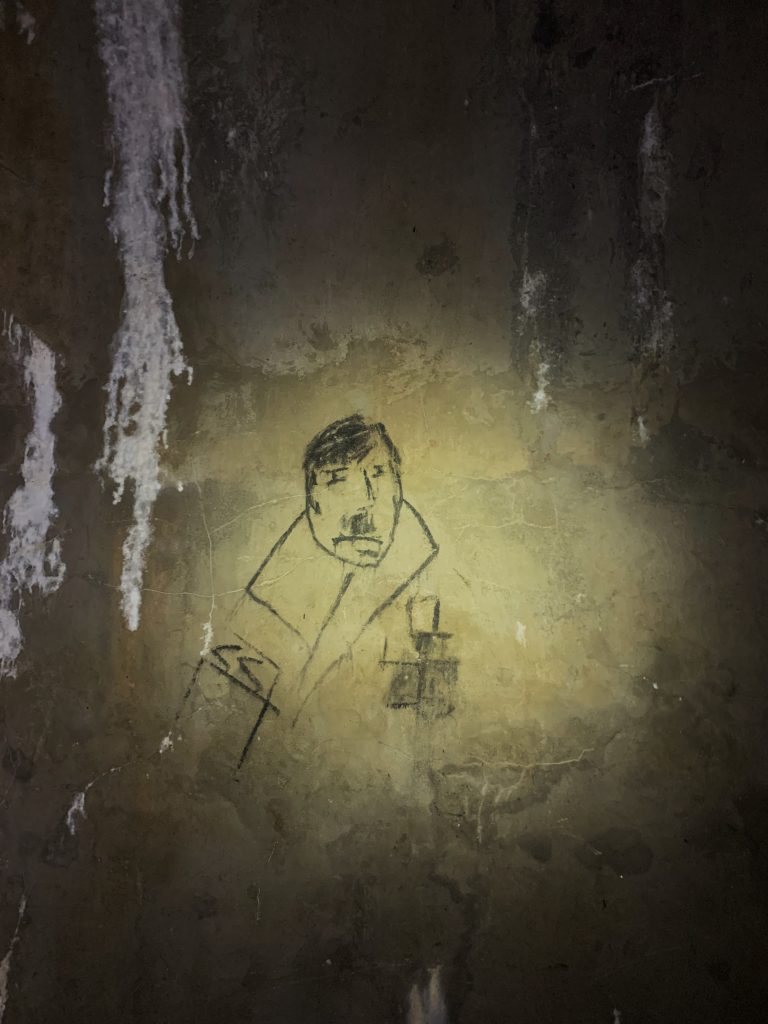
All over the floor, a thin, snow-like layer of limestone crystals deposited by water crunches under our boots. We try to walk as inconspicuously as possible to avoid damaging the natural formations. Some have grown into solitary yellow stalagmites.
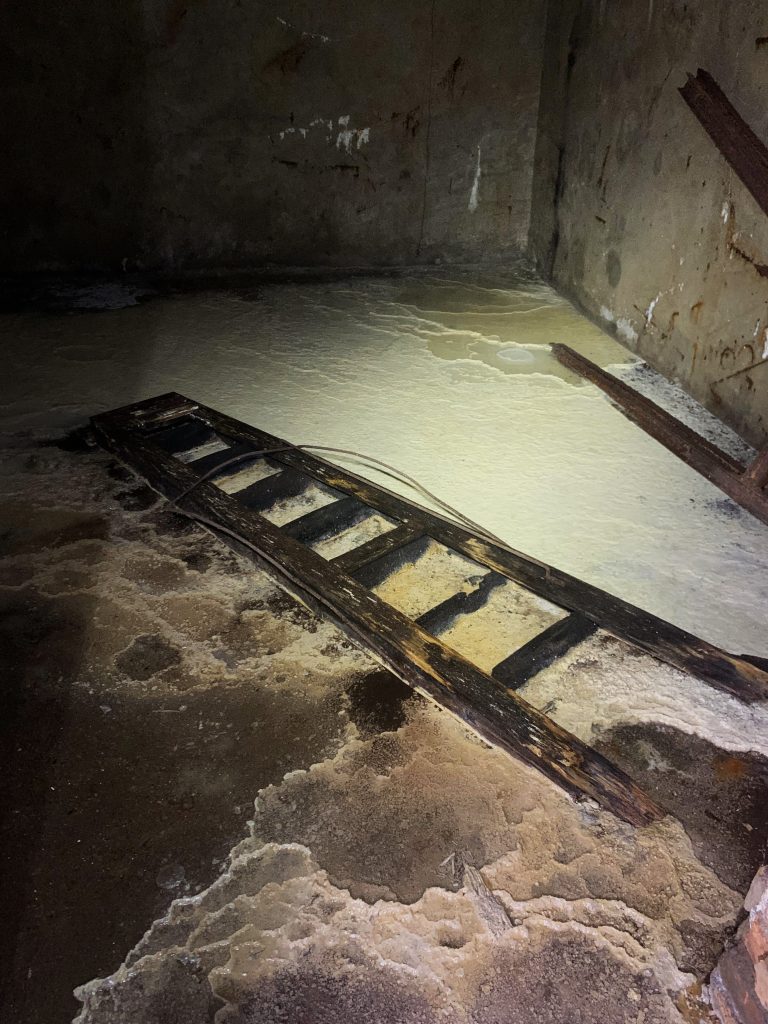

On the ceiling, very long, white straw-like stalactites hang dangerously above our heads. So fragile are they, that a mere gust of wind could knock them down. 327 meters seem endless in this place. We notice an old, broken ladder leaning on the wall. Next to it, high up above, another, narrower slanted tunnel is beckoning to us. My friend Andrea decides to try the ladder and check. I hold it and pray it doesn’t break, although the climb up this secondary tunnel is probably what we should both worry about. It is steep, slippery, and offers no handholds.
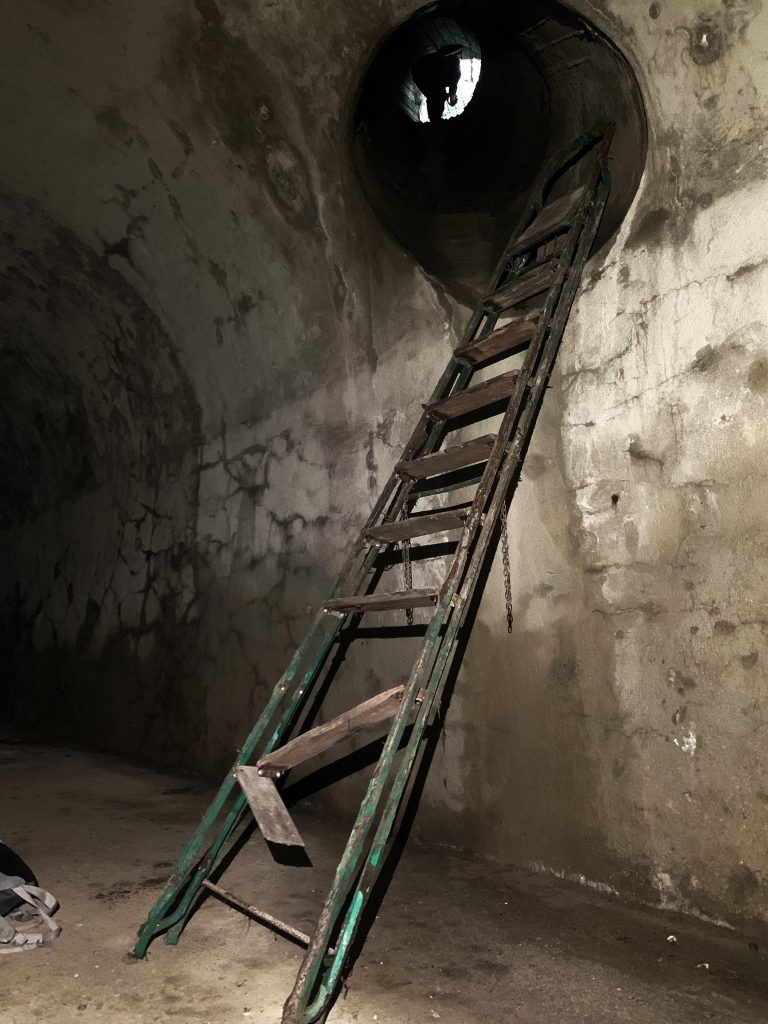
This tiny tunnel, however, is soon filled with piles of trash probably dropped from a manhole above. The trash covers several decades and fashions: shoes, clothes, and hats all tell us about another era. Andrea not only manages to survive the climb but brings me back a gift, a creepy toy from the early 1960s! A kind gesture I cannot refuse there and then, but that I will definitely keep locked somewhere to preserve my sleep.
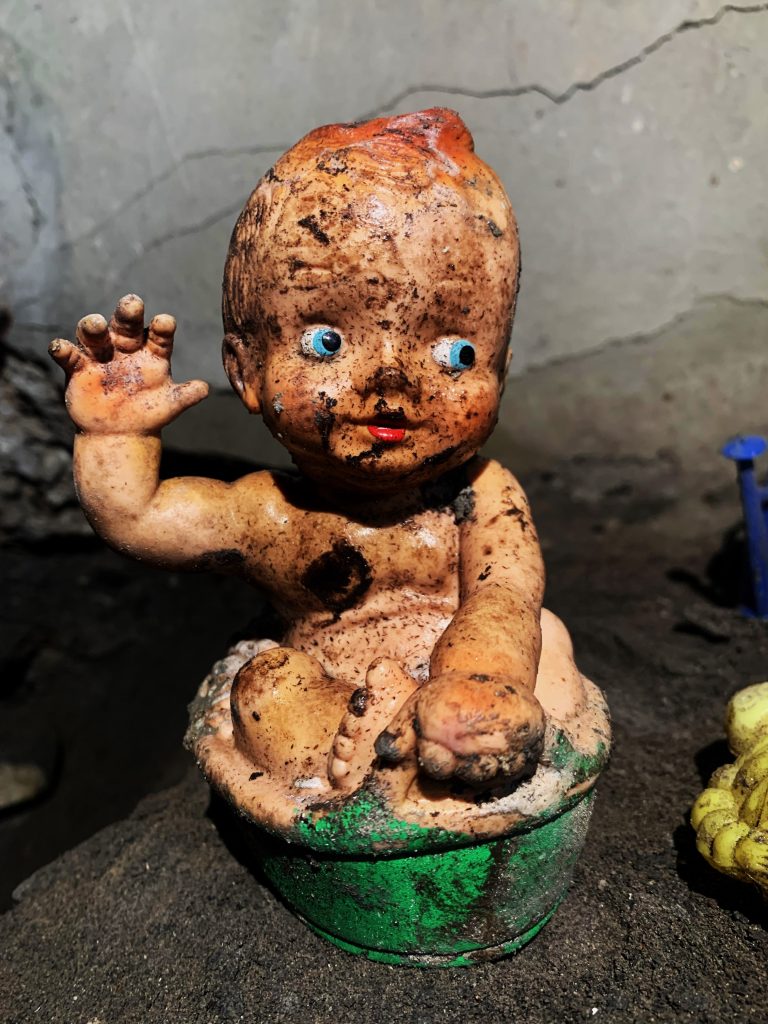
The exploration continues until we reach the second blast-proof wall where the exit should have been, but instead, the tunnel takes several sharp turns left and right. Amidst pools of muddy water and unidentifiable objects halfway sunk into what looks like quicksand, we reach a breach in the wall leading to the exit, protected outside by a huge cement slide. An old abandoned Vespa moped and a mummified cat greet us into an entirely walled, inaccessible garden filled with trees and wild bushes.
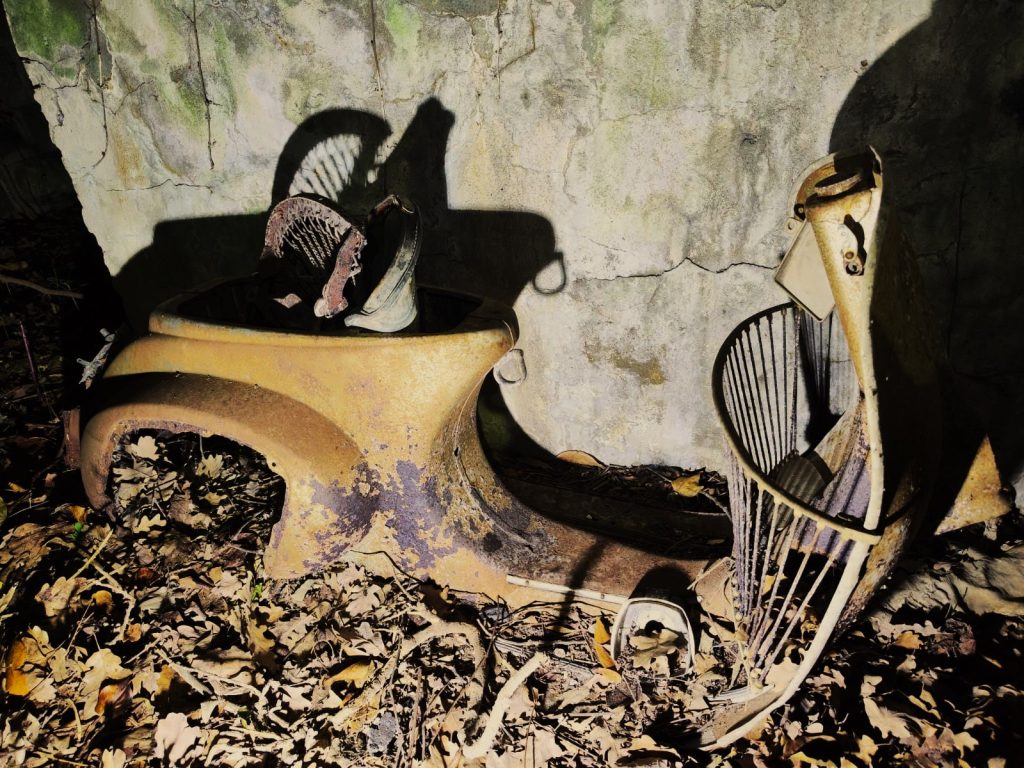
The wall is too high and impossible to climb, so we turn around and head back to the entrance gate. We try to imagine what it must have been like to sit inside the shelter for hours in a row, waiting among strangers in semi-darkness for the siren announcing the end of air incursions, and hoping that your house was still standing by the time you got back. During the air raids, several neighborhoods in Trieste were hit hard by the Allied forces. Not only did the bombs miss their targets, which were mainly the port, the shipyards, and the fuel tanks, but on two occasions they hit the entrance of the shelters the moment the civilians were crowding to get in and out, causing hundreds of casualties.




























